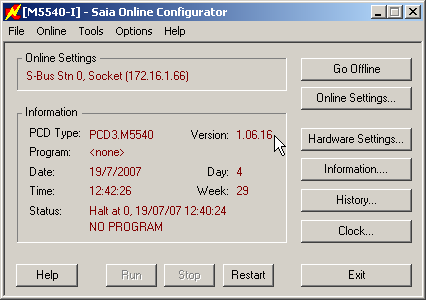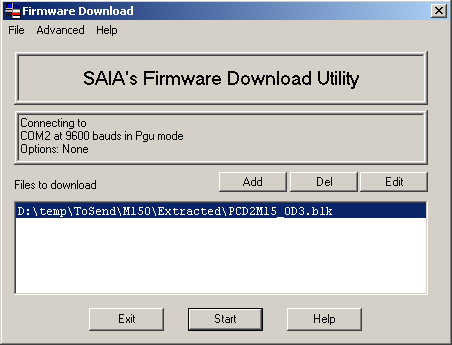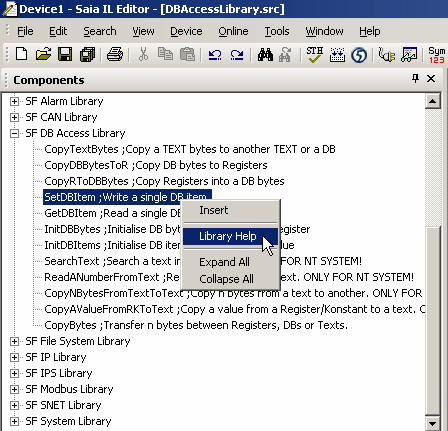The requested software / document is no longer marketed by Saia-Burgess Controls AG and without technical support. It is an older software version which can be operated only on certain now no longer commercially available products.
-
PCD2.M120
-
Central processing units
(obsolete, replaced by PCD2.M150 or PCD2.M5xx0)
-

Documentation
PCD1 | PCD2 Hardware
| Manual | 26-737 | PCD1 | PCD2 Hardware |
IO-Modules
| Manual | 27-600 | IO-Modules |
Firmware
Software
Good to know
The PCD2.M120 has been phased-out in 2009 (repair service until end of 2014). As possible replacement a PCD2.M150 or a PCD2.M5xx0 can be used.
PCD2 / _Firmware Classic
- It's possible to connect SBC PCD's directly to the internet? (FAQ #102060)
- What are the differences between the COSinus firmwares FW 1.28.11 and FW 1.28.51? (FAQ #102058)
- Why does the PCD2.M5540 show the history error message 'FABINFO CRC FAIL' or the entry 'Fab. Date (year/week): 2000/00; BAD PROD INFO CHECKSUM' in the diagnostic file and in the hardware info of the PG5 Online configurator? (FAQ #102040)
- Why the RS-485 S-Bus communication between the PCD master and the slave does fail sometime, if FW 1.28.20…1.28.33 is used? (FAQ #102026)
- PCD Firmware 1.28.16 or 1.24.69 fix the Ethernet frame padding information leakage (FAQ #102011)
- What are the differences between the COSinus firmwares FW 1.28.11 and FW 1.28.51? (FAQ #102010)
- Lon Bindings lost after power off / on with FW 1.26.15 (FAQ #101999)
- What are the differences between the COSinus firmwares FW 1.24.67 and FW 1.26.31? (FAQ #101987)
- What is the meaning of the PCD history entry ‘FWDnld UnknownFW’? (FAQ #101959)
- How to find more information based on the error message "SF not loaded"? (FAQ #101568)
- What does CSF stand for? (FAQ #101566)
- Which hardware revision of the PCD2.M5_ is needed for firmware 1.14.23? (FAQ #101490)
- What are the differences between firmware 1.10.51 and 1.14.23? (FAQ #101470)
- Why can't I send more than 512 bytes using the STXT instruction? (FAQ #101468)
- Can I have more than 16 COBs? (FAQ #101467)
- Why is the error bit 7 or 8 set when I try to execute a "Backup DB to flash"? (FAQ #101466)
- What are the differences between firmware 1.10.16 and 1.10.51? (FAQ #101422)
- How to define a comma as separator in interpreted texts? (FAQ #101392)
- Potential data loss on SD cards bigger than 256 MBytes (FAQ #101377)
- Overview of the current production firmware versions (FAQ #101304)
- What does "Saia PCD® COSinus" stand for? (FAQ #101297)
- How to implement a software watchdog (FAQ #101285)
- Why does the S-I/O communication no longer work on a PCD3 or a PCD2.M5? (FAQ #101244)
- What is the "WebServer2" on Saia PCD® COSinus systems? (FAQ #101191)
- Can I calulate with IEEE floating point values on a PCD system? (FAQ #101188)
- Can I read a value from a PCD text and copy it into a register? (FAQ #101187)
- Is it possible to search an expression within a PCD text? (FAQ #101186)
- Why do I sporadically get communication errors when connecting a PCD/PCS in "Secure S-Bus Data Mode"? (FAQ #101180)
- The XOB 8 is no longer called on the systems Saia PCD® COSinus. (FAQ #101137)
- What criterias are to be fulfilled for sending e-Mails from the PCD? (FAQ #101054)
- Why do I get a "68k add Error" when writing a text on the S-Web Server? (FAQ #101049)
- Why is the message: "Failed to get data on alarm.exe" displayed on the alarming page? (FAQ #100963)
- Is it possible reading the PCD "IP address" from the user program? (FAQ #100952)
- How does the system watchdog work? (FAQ #100908)
- Why are broadcast telegramms not working anymore on the PCD3 or PCD2.M480 (FAQ #100798)
- New firmware version names for Saia PCD® COSinus systems (a.bb.cc) (FAQ #100741)
- Different handling of the TBSY flag (in MC mode) between PCD3 / PCD2.M5 and older systems (FAQ #100655)
- Booter update on PCD2.M150 (FAQ #100606)
- Firmware download on a PCD2.M150 (FAQ #100598)
- S-Bus Slave on Port 3 doesn't work with FW 020 on the M480 (FAQ #100389)
- lose Hardware settings after Firmware update (FAQ #100366)
- FW depending differences in the handling of the diagnosic flags (FAQ #100321)
- Incompatibility of old FW and new Profibus DP configurator (FAQ #100319)
- Which Flash chip to use for which usage? (FAQ #100309)
- Error LED of PCD is lit! How to find the problem? (FAQ #100269)
- What EPROM burner is recommended to create firmware chips for PCD's? (FAQ #100256)
- Baudrate limitation on serial ports (FAQ #100252)
- Communication interface isn't reset on SW watchdog restart with option XOB0 enabled (FAQ #100243)
- Software Watchdog mustn't be used with FW 0C1 on PCD2.M150! (FAQ #100218)
- Firmware version naming of non-Saia PCD® COSinus systems (FAQ #100176)
- Not all History entries can be found in the Online Help of PG5 (FAQ #100173)
- Why is the instruction DSP not supported on Saia PCD® COSinus systems? (FAQ #100034)
Communication / LON (FTT10)
- Are the LonWorks devices PCD2.F240, PCD3.F2400 and PCD7.R582 still available? (FAQ #102064)
- LON Work: how many variables SNVT can be used on a PCD/PCS ? (FAQ #101296)
- Can I run BACnet and LON on the same PCD at the same time? (FAQ #101216)
- Why it’s not possible to make the binding with the LonMaker to a PCS1? (FAQ #101132)
- How to configure a LON interface on a PCD1 / PCD2? (FAQ #101075)
PCD2 / M1xx
- On a PCD2.M4560 or PCD3.M5560, why the measured PT100 temperature values are not correct if the PT100 sensors are connected to PCD2.W220Z18 or PCD3.W220Z18 modules? (FAQ #102052)
- Why do the output of the PCD2/3.W6x5 not deliver stable signals? (FAQ #102014)
- Why is the modem "MDLS144 onbit" no longer working on a new PCD? (FAQ #101718)
- Until when can a PCD2.M120 be reparied? (FAQ #101482)
- Why do I get a "DUART HW ERROR" on PCD2.M150 after restart? (FAQ #101395)
- Why does the IP communication not work with firmware 0F0? (FAQ #101384)
- Why does my PCD1 no longer start (due to a "Text segment error") after downloading a project with PG5 2.0? (FAQ #101379)
- Firmware dependencies for the "DB Access Library" (FAQ #101372)
- Meaning of the error codes for DB backup to flash (FAQ #101284)
- Is Modbus supported by Saia PCD®s? (FAQ #101270)
- "Send SMS extended" FBox and PCD1.M1x0 and PCD2.M110/120 (FAQ #101163)
- RAM chip types to be used as user memory on a PCD1.M1xx or PCD2.M1xx (FAQ #101100)
- What is the minimum distance between PCD2.Mxxx CPUs and PCD2.C1xx extension rack? (FAQ #100892)
- Is possible to use two TCP/IP modules on a PCD CPU? (FAQ #100785)
- Firmware download on a PCD2.M150 (FAQ #100598)
- Is it possible to download an xx7 firmware to a classic PCD and invers? (FAQ #100557)
- Can I use the same GSD File for PCD2.M170 as for PCD4.M170 (FAQ #100412)
- Functional limitation regarding the use of the modem library (FAQ #100392)
- PCD2.M170 or PCS1: WEB Server works only if a WEB project is downloaded in the PCD! (FAQ #100380)
- Which Flash chip to use for which usage? (FAQ #100309)
- PCD2.M150F650: Cannot go online via TCP/IP (FAQ #100270)
- What is the max. size of DBs/TEXTs in the extension memory of PCD2.M170/480 with a PCD7.R400 memory module? (FAQ #100266)
- Software Watchdog mustn't be used with FW 0C1 on PCD2.M150! (FAQ #100218)
- Firmware version for PCD7.F650 and PCD2.M480 (FAQ #100189)
- PCD7.D7xx terminal works on PGU port of PCD2.M110 but not on PGU port of PCD2.M150! (FAQ #100188)
- Corrupted Flash user memory makes writing HW settings or program impossible (FAQ #100146)
- "COM O 255" for Watchdog on a system with PCD3.Cxxx might cause problems (FAQ #100101)






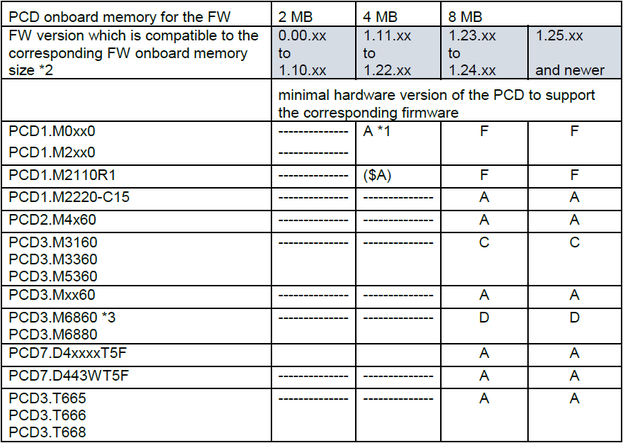
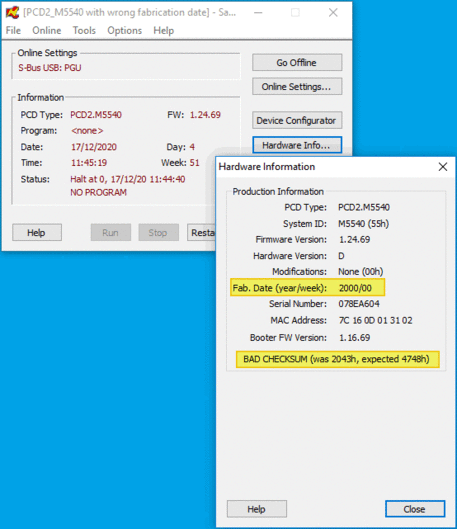

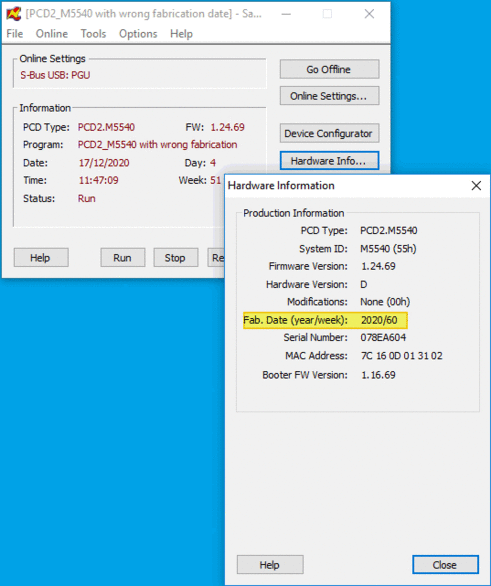
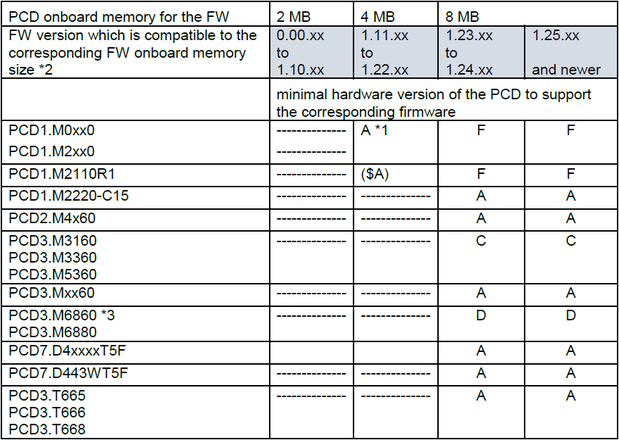
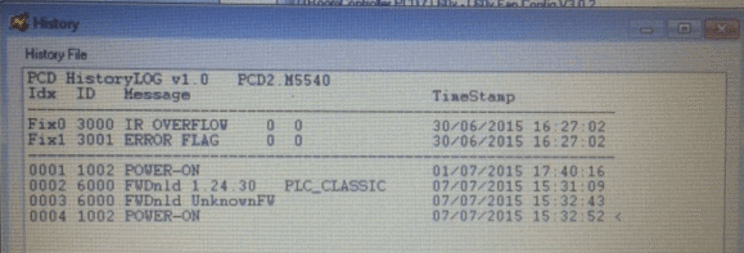
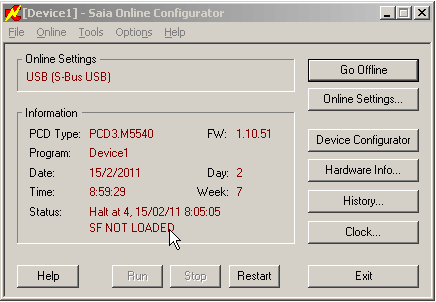
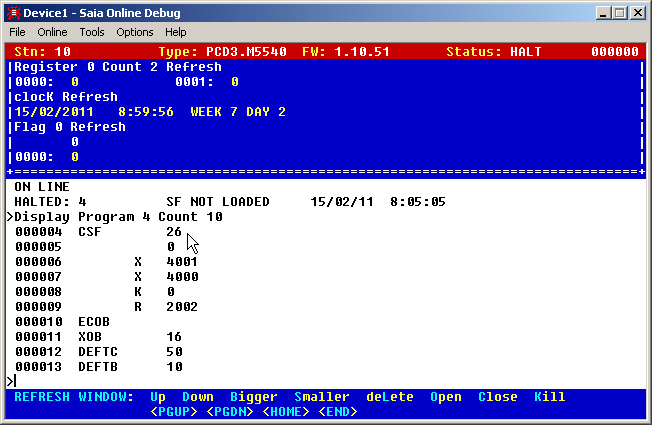
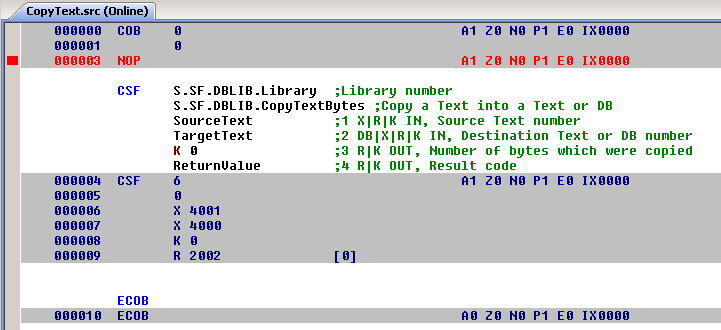
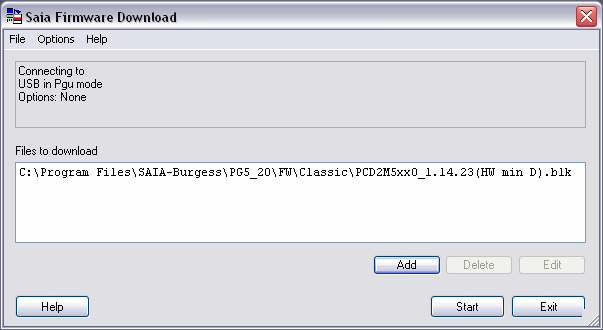
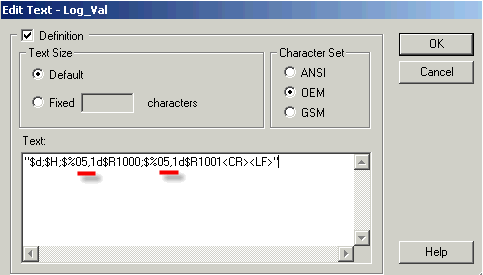

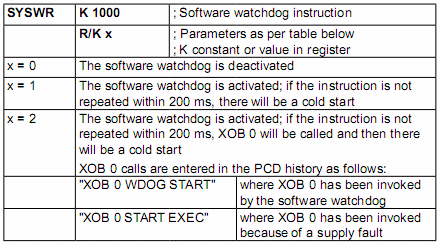

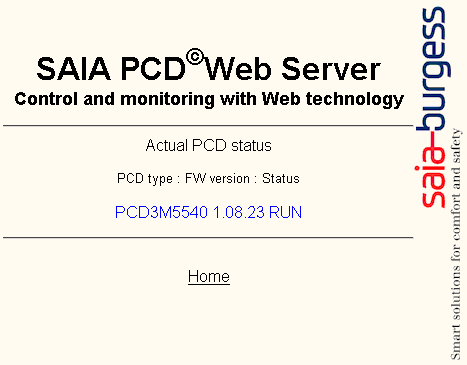

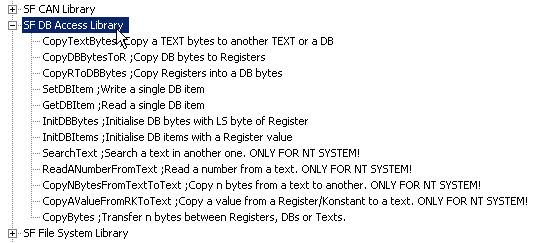
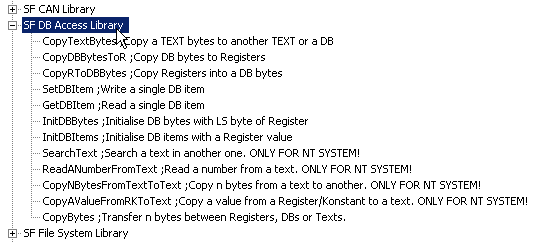
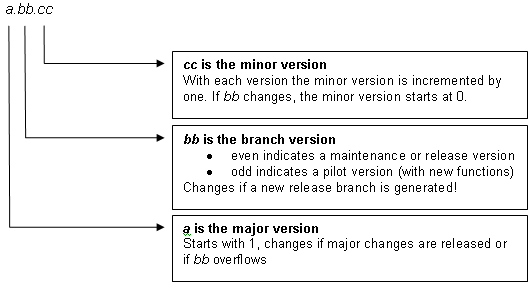
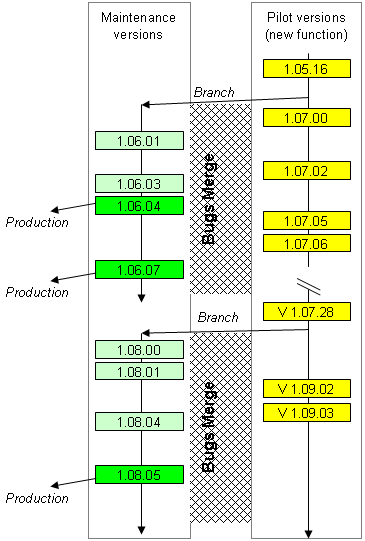
 Released beta- or maintenance versions (equivalent to the current “Bxx” or “#xx” versions).
Released beta- or maintenance versions (equivalent to the current “Bxx” or “#xx” versions).  Released Production versions (equivalent to the current “0xx” versions): These versions are introduced in the production.
Released Production versions (equivalent to the current “0xx” versions): These versions are introduced in the production.  New function versions (equivalent to the current “$xx” versions).
New function versions (equivalent to the current “$xx” versions).